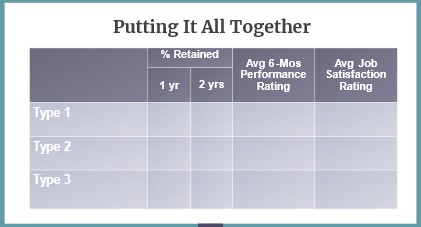Assessing your Workforce Needs
You know you have a workforce challenge… but do you know what is causing it? Many child welfare agencies have expanded recruitment efforts through social media, started using telework and flexible work schedules, and even increased wages and provided hazard pay to build and strengthen their child welfare workforce. But sometimes even the best strategies don’t fix the problem because they aren’t aligned with the underlying cause of the problem.
When your child welfare workforce is understaffed or overwhelmed it is tempting to want to find an immediate fix because the need to expand the workforce is urgent. However, it is worth the time to look more closely at the problem and understand the root causes (to hear from QIC-WD sites about the value of slowing down watch the Three Keys to Implementation video). The QIC-WD worked with public child welfare agencies to do a root cause analysis where they looked closely at human resources (HR) data to identify the underlying causes of some common workforce challenges. Although many agencies had similar problems, the solutions they implemented to address those problems were different and that was because they spent time figuring out the root cause(s).
Agencies need to consider many workforce questions to as you explore your workforce data. The goal is to take the time to be thorough and systematic in understanding workforce issues, rather than jumping to attempted solutions. The QIC-WD’s Brief Needs Assessment for Child Welfare Agencies is a tool that can help guide this process. This tool will assist child welfare and HR professionals as they work together to gather and understand their agency’s available data.
 There are three main categories of workforce outcomes that your agency likely has data on: employee performance, employee retention/turnover, and employee well-being. You can use tools like the example table below to see connections between the various data sets. Let’s say you wanted to better understand your agency’s retention for employees who were recruited through different methods, such as website advertising, job fairs, or employee recommendations (Type 1, 2 and 3 in the example table). You can work with HR to break down the data and look at what percentage of employees who were hired using each of these three recruiting strategies, are still with the agency one and two years later (% Retained in the example table). You could add to that the average performance rating that these employees recruited in the three ways received, and finally you could compare the three groups on their average job satisfaction rating, taken from your most recent organizational surveys. When you break down your data like this, you can start to see which of the three recruiting strategies result in bringing workers into the agency who stay, are good performers, and are happy with their job.
There are three main categories of workforce outcomes that your agency likely has data on: employee performance, employee retention/turnover, and employee well-being. You can use tools like the example table below to see connections between the various data sets. Let’s say you wanted to better understand your agency’s retention for employees who were recruited through different methods, such as website advertising, job fairs, or employee recommendations (Type 1, 2 and 3 in the example table). You can work with HR to break down the data and look at what percentage of employees who were hired using each of these three recruiting strategies, are still with the agency one and two years later (% Retained in the example table). You could add to that the average performance rating that these employees recruited in the three ways received, and finally you could compare the three groups on their average job satisfaction rating, taken from your most recent organizational surveys. When you break down your data like this, you can start to see which of the three recruiting strategies result in bringing workers into the agency who stay, are good performers, and are happy with their job.
These structured evidence-informed assessment tools can help identify your agency’s needs, gaps, and strengths. Taking the time to gather pertinent data points and lay it out in a meaningful way can help child welfare leaders make informed decisions about the underlying causes of their pressing workforce challenges.